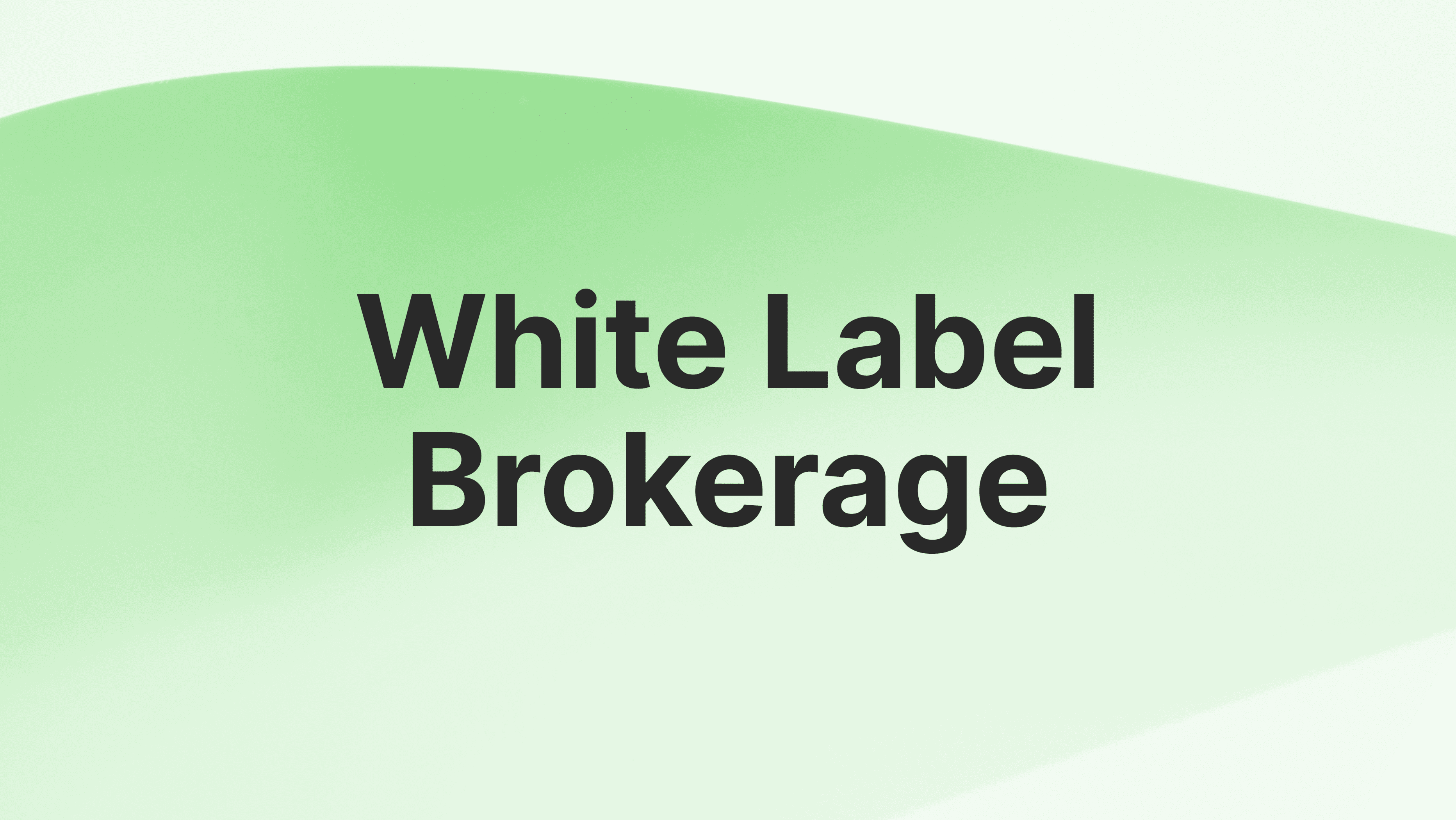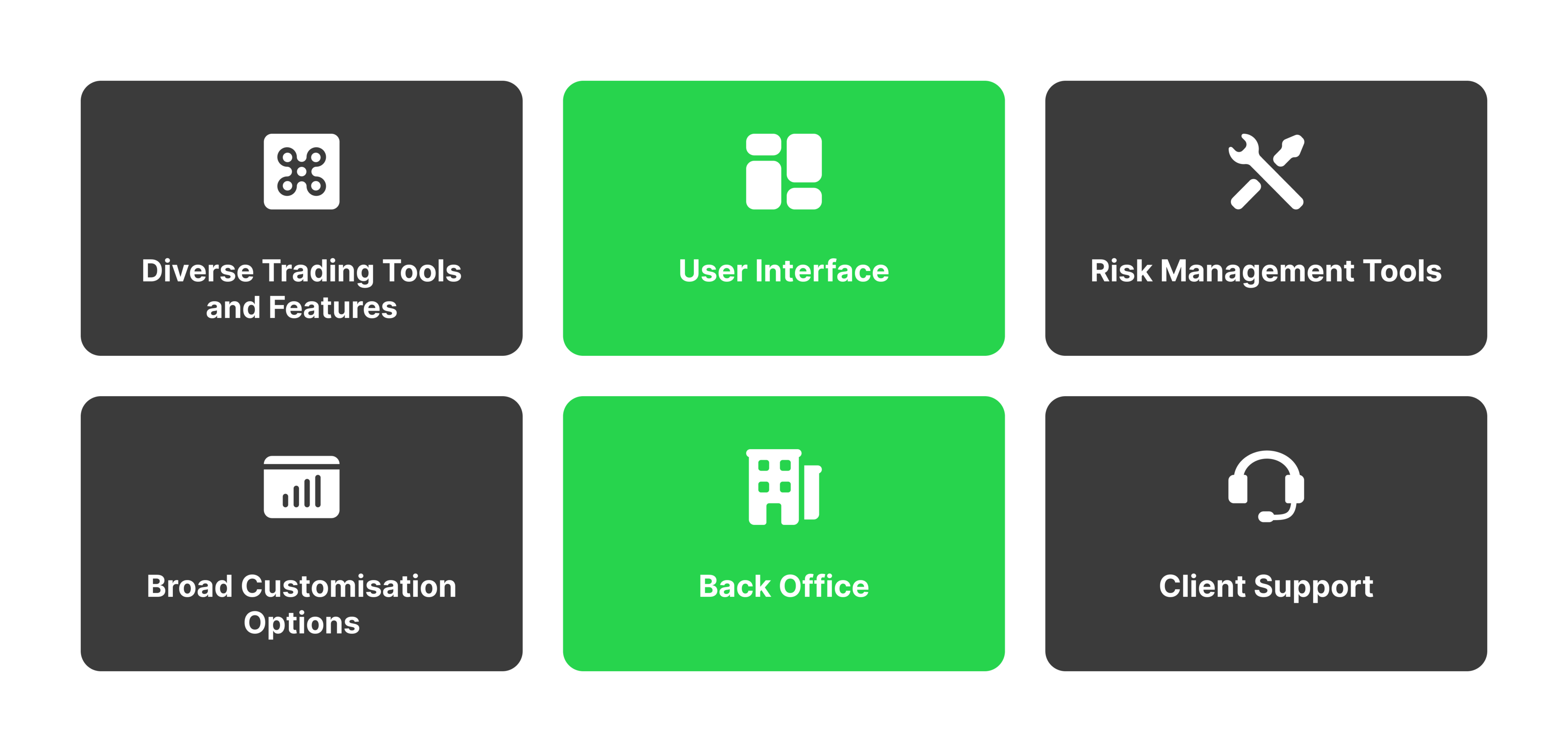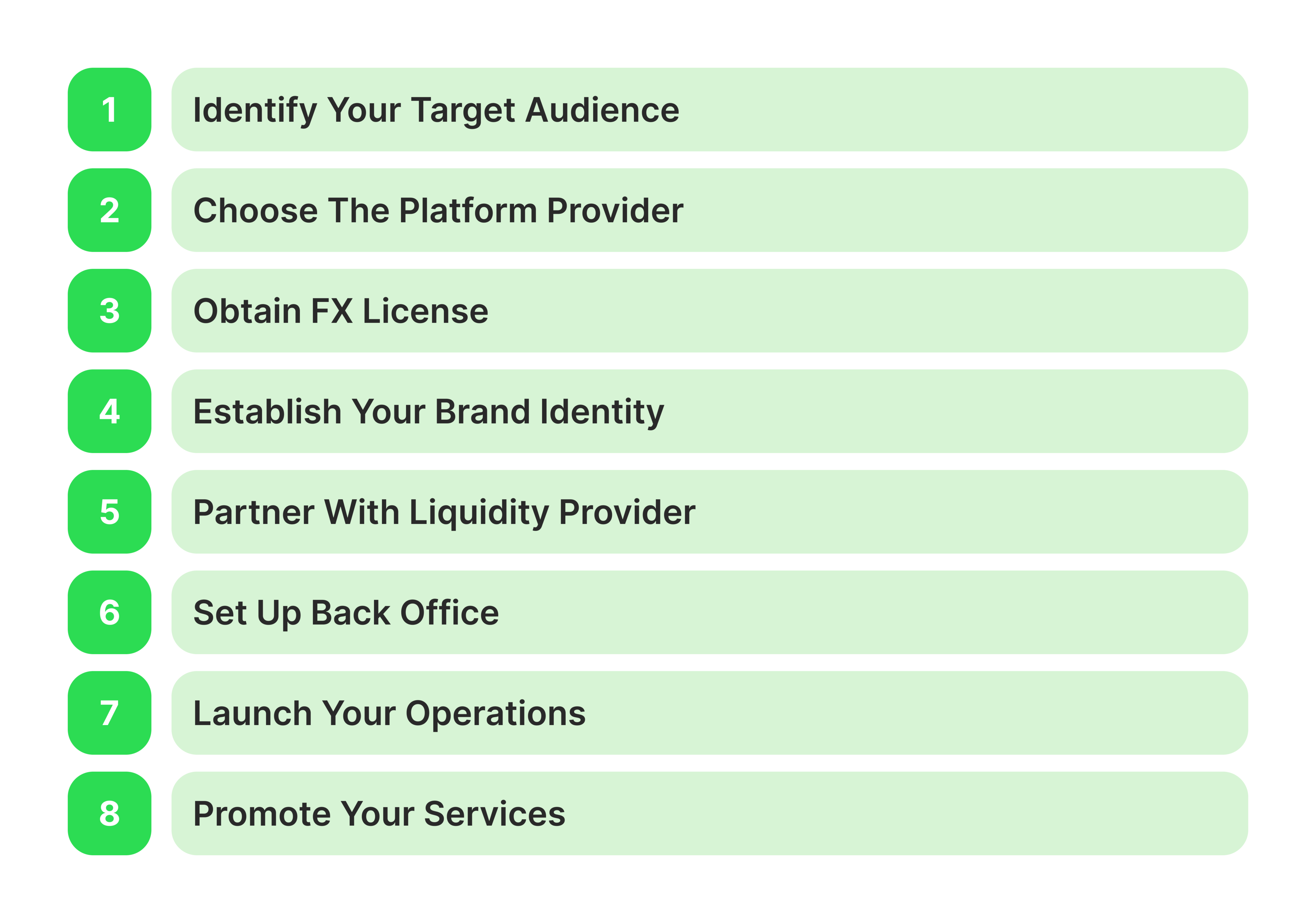Starting White Label Brokerage: What to Consider

 By Anna Churakova
By Anna ChurakovaBeing a person who is always eager to learn something new about the world and is fond of learning foreign languages, I had a lot of experience with text in various fields while working as a technical translator, technical writer for fintech products, and copywriter.
 By Tamta Suladze
By Tamta SuladzeTamta is a content writer based in Georgia with five years of experience covering global financial and crypto markets for news outlets, blockchain companies, and crypto businesses. With a background in higher education and a personal interest in crypto investing, she specializes in breaking down complex concepts into easy-to-understand information for new crypto investors. Tamta's writing is both professional and relatable, ensuring her readers gain valuable insight and knowledge.

The field of FX trading continues to record massive volumes, making it possible for those with the drive, vision, inspiration, and commitment to succeed. As the number of FX traders increases, so do the firms and brokers that facilitate online trading transactions.
However, starting an FX brokerage requires careful planning and a thorough understanding of the market, as well as significant investment in terms of finance and development costs, time, and effort.
Turnkey solutions are essential for businesses to quickly establish their presence in the FX market, allowing them to offer trading services under their own brand in no time and without the hassle of building their own platform.
In this article, we will explore the key elements of a white-label brokerage and discuss how you can start it.
WL Forex brokers utilise the licenses, technology, and infrastructure of WL providers to offer trading services to their clients under their brand names.
An easy-to-use interface, various trading tools, customisation options, etc., are key elements of a white-label brokerage platform.
Starting a white label Forex brokerage can be beneficial due to low expenditures, scalability options, and swift entry to financial markets.
B2Broker, Leverate, and UpTrader are some of the best WL providers of FX platforms.
White label (WL) FX is a software-as-a-service model that includes a branded trading platform and a back office panel for brokers to manage user exposure, groups, trading instruments, leverage settings, and more. WL is suitable for companies with strong market positions or entrepreneurs with a marketing plan.
A white-label Forex broker uses licensed platform providers to provide technology and back-office support, allowing them to customise and launch solutions under their brand. This model allows new brokers to enter the market quickly and cost-effectively. WL brokers control branding, marketing strategy, product offerings, and customer service, while platform providers handle trade execution, risk management, regulatory compliance, and technology maintenance. This business partnership allows WL brokers to focus on core competencies.

An FX WL solution is ideal for individuals or companies with limited experience in the FX industry to become brokers and create their own brands. White labelling leases the right to market another firm's trading platform as its own, passing trades through to the lessor. This arrangement allows the lessee to start a successful Forex firm without buying a platform.

The best white-label trading platform should cater to all traders' needs, allowing them to build strategies and conduct transactions on preferred instruments. The most crucial features to consider before choosing a platform include the following:
WL platforms should offer a wide range of trading instruments, including currency pairs, commodities, indices, and cryptocurrencies, allowing traders to diversify their risk and capitalise on various market opportunities.
A WL FX platform's trading software should include real-time market data display, advanced charting tools, and automated trading options, often customisable to suit traders' preferences. These features can significantly enhance user interaction with a platform and boost trades.
WL platforms should offer advanced risk management tools to help traders navigate market risks. These include stop-loss and take-profit orders, which limit potential losses and lock in profits by closing a trade at a predetermined price level. Real-time alerts and notifications keep traders informed about market movements, price levels, and account status changes.
Customised alerts can be set for price thresholds, economic events, or market conditions. Demo account availability is crucial for novice traders to test their strategies and familiarise themselves with risk management tools without financial risk.
WL FX platforms should offer businesses the flexibility to customise their platform to their unique brand identity and operational needs in order to differentiate themselves in the competitive Forex market. Branding customisation should involve integrating branding elements like logos, colour schemes, and thematic designs into the platform.
User interface customisation should allow modifying the layout and design elements to enhance user experience, such as dashboard views, chart designs, and navigational structures. Multi-language support and localisation options are also available to cater to a global audience.
White-label FX platforms must have back-office solutions that are crucial for efficient operational management. These solutions support various aspects, ensuring client and regulatory needs are met. These include client account management, which involves overseeing account registrations, verifying client identities, and managing account settings.
Compliance and regulatory reporting tools must also be provided to generate reports for regulatory bodies and monitor transactions for AML purposes. Financial reporting capabilities could be useful for creating detailed reports on trading activities, profit and loss statements, client transaction histories, and overall performance.
Customer support systems are crucial for the success of a WL FX platform. Modern platforms offer multiple channels for communication, including email and phone, allowing traders to choose the best mode for their needs.
Live chat features provide real-time assistance during market hours, especially in FX trading, where market conditions can change rapidly. A comprehensive knowledge base or FAQ section is also essential, delivering traders information on common queries, platform features, trading strategies, and troubleshooting guides.

The white label business model offers numerous benefits compared to other strategies, enhancing trader activity and offering major advantages. Let’s explore some of the most outstanding pros of having a WL FX agency.
WL products in FX trading offer cost efficiency by eliminating the complexity of creating a white label Forex trading platform from scratch. White-label FX businesses offer lower start-up costs by leveraging the broker's existing infrastructure and technology and obtaining regulatory licenses, which can be time-consuming and costly when performed independently.
Turnkey solutions in FX trading provide rapid market entry and quick setup, allowing businesses to start promoting their platforms in days or weeks. This model also saves time and money for startups by offering the latest technologies. Platform providers often offer tailor-made solutions, allowing end products to be tailored to customer requirements.
Turnkey FX platforms offer scalability, allowing businesses to adapt to their growth and client base by adding more trading instruments, incorporating advanced analytical tools, or expanding server capacity. This allows for efficient cost management, adapting to market demands and evolving business needs without substantial additional investment.
Reliable white-label software developers offer continuous support and updates for their solutions and products after their launch, eliminating the need for customers to invest in technology maintenance. This ensures quality, reliability, and perfected products from experienced companies, eliminating the need for additional personnel for product updates or restructuring.
Pre-built FX agencies offer competitive pricing and deep liquidity through a variety of liquidity providers. They also provide robust risk management tools like real-time monitoring and margin controls, protecting clients' investments.
Partnering with a WL provider in the foreign exchange industry can help you navigate the complex regulatory landscape, allowing you to focus on your core business without worrying about legal and compliance aspects.
Let’s explore how to start your own WL FX Brokerage.

When starting an FX broker, it's crucial to choose the right target market. This involves conducting a thorough market analysis to understand the different types of traders, their preferences, and trading habits. Understanding demographics, such as age, income, trading experience, and risk tolerance, can help tailor your offerings. Thus, younger, tech-savvy traders may prefer a platform with advanced features, while seasoned traders may prefer a platform with in-depth market analysis and a wide range of currency pairs.
The choice of a technology provider is crucial, requiring thorough due diligence, platform evaluations, understanding of infrastructure, security protocols, and disaster recovery.
Compare providers' features, ratings, customer reviews, regulatory compliance, competitive spreads, and service packages. When choosing a white-label solutions provider, consider reputation and technical expertise.
Partner with a veteran provider that shows years of experience and continuously innovates their platforms, such as MetaTrader 4 and 5, which are Forex industry standard. Negotiate a partnership agreement with the chosen provider, defining terms, revenue sharing, and responsibilities.
To apply for a trading platform license, register a legal entity and obtain an FX license from regulatory bodies. Consider the types of products regulated, the cost and time required, and the regulatory fees. Solutions providers can recommend reputable licenses like CySEC, VFSC, and FCA. Research regulatory requirements and comply with anti-money laundering and know-your-customer regulations to legally operate an FX brokerage.
Choosing an FX broker requires establishing a unique brand identity through a unique name, logo design, and a user-friendly website that provides information about services, trading platforms, and support options.
Liquidity is a crucial element in FX brokers' setup, ensuring seamless trade execution and a favourable trading environment. It's recommended that you choose a turnkey solutions provider with a full-suite offering, including trading terminal, CRM, and liquidity, optimised for peak compatibility and performance.
Aggregated pricing is essential for tight spreads and depth for large orders. Established solutions providers offer Prime of Prime (PoP) liquidity, accessing institutional interbank liquidity through aggregation technology and "plug and play" integration.
To effectively manage client accounts, deposits, and withdrawals, it's crucial to establish back-office operations, including robust risk management systems, CRM software, and payment processing solutions, ensuring efficiency, security, and compliance with regulations.
The launch phase involves customising WL platforms for individual needs, ensuring compliance with global rules, and converting site traffic. Third-party infrastructure enables remote operations, and consistent branding across territories establishes a cohesive presence.
The strategy involves creating high-quality content, nurturing subscriber databases, engaging social media communities, implementing cost-effective promotion campaigns, offering round-the-clock customer support, adhering to regulations, and rewarding loyal clients with benefits to retain advocacy, growing the brand's footprint, ensuring client acquisition.
Starting a Forex brokerage from scratch can be a daunting task, especially if you're not already in the FX business. A turnkey solution can provide a smoother entry into the market, allowing you to accept customer deposits and control your clients.
A white label brokerage offers a customisable interface, advanced trading tools, multi-asset trading capabilities, regulatory compliance, and partner support. It helps businesses create a unique brand identity and provides a top-notch trading experience.
Reliable providers offer turnkey solutions, but success is not guaranteed and requires hard work, investment, and patience.
White-label Forex platforms are regulated by major global authorities like the UK's FCA and the US's CFTC.
The MT4 White Label solution is a customised infrastructure-based trading platform offering cross-platform support, liquidity compatibility, and fast market entry under another company's brand.
White labelling is legal for companies to rebrand and sell existing products under their own brand as long as they adhere to regulations and intellectual property laws.
White-label brokers can create their own brand without mentioning the provider, and no proprietary technical support is required, eliminating issues like server rentals and platform configurations.